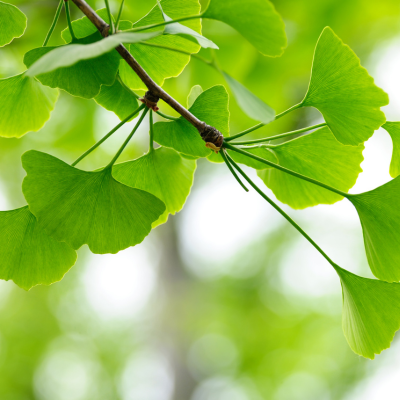Gingko Biloba
Gingko biloba Family: Gingkoaceae

Overview
Ginkgo Biloba, also known as the Maidenhair tree, is one of the world’s oldest living tree species, revered for its ability to enhance cognitive function and energy. Traditionally used to support brain health, improve memory, and stimulate circulation, particularly to the brain, Ginkgo is often taken over a longer duration for best effects. The distinctive fan-shaped leaves contain powerful flavonoids and terpene compounds that contribute to its neuroprotective and vascular-stimulating properties. As both a sacred botanical and ornamental tree, Ginkgo bridges the wisdom of ancient medicine with modern vitality.
Traditional Uses:
Fun Fact:
Also known as Maidenhair tree, leaf and fruit are used to control aphids and grubs; world’s oldest living tree species
Applications:
15 drops of tincture, three times daily for minimum 3 months; 1 Cup of infusion daily
Parts Used:
Leaves
Habitat & Growing Conditions:
Ancient tree native to SE and South Central Asia; now a common ornamental tree throughout North America and Europe. Prefers moist, well drained, sandy soil; full sun to partial shade; hardy to zone 5
Traditional Chinese Medicine Flavors:
Bitter, astringent, neutral energy; nuts are mildly toxic (can roast before eating)
Properties:
- Vasoactive improving circulation to the brain
Key Constituents:
- Flavoniods
- Kaempferol
- Quercetin
- Isorhamnetine
- Nonflavonoid terpenes
- Bilobalide
- Gingkolides
- Vitamins A, B, and C
- Lignans
- Essential Oil
- Tannins
Try Gingko Biloba in our:
Source:
The Way of Herbs, Michael Tierra
Herbs: An Illustrated Encyclopedia, Kathi Keville
These statements have not been evaluated by the Food and Drug Administration. This product is not intended to diagnose, treat, cure, or prevent any diseases. If you are under the care of a health care provider and/or taking prescription medication, check with your health care provider before taking any herbal supplement.


